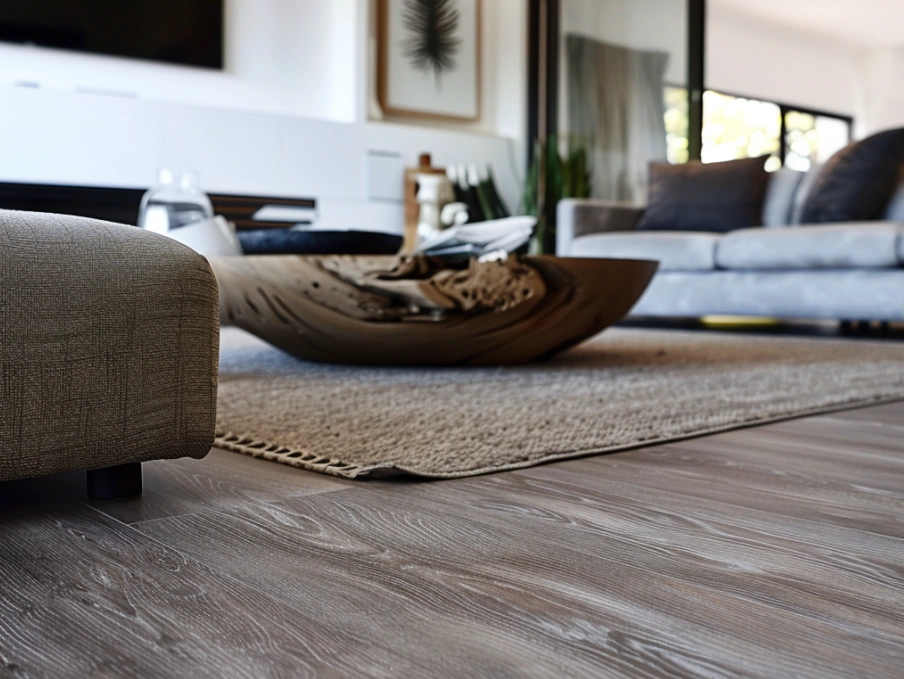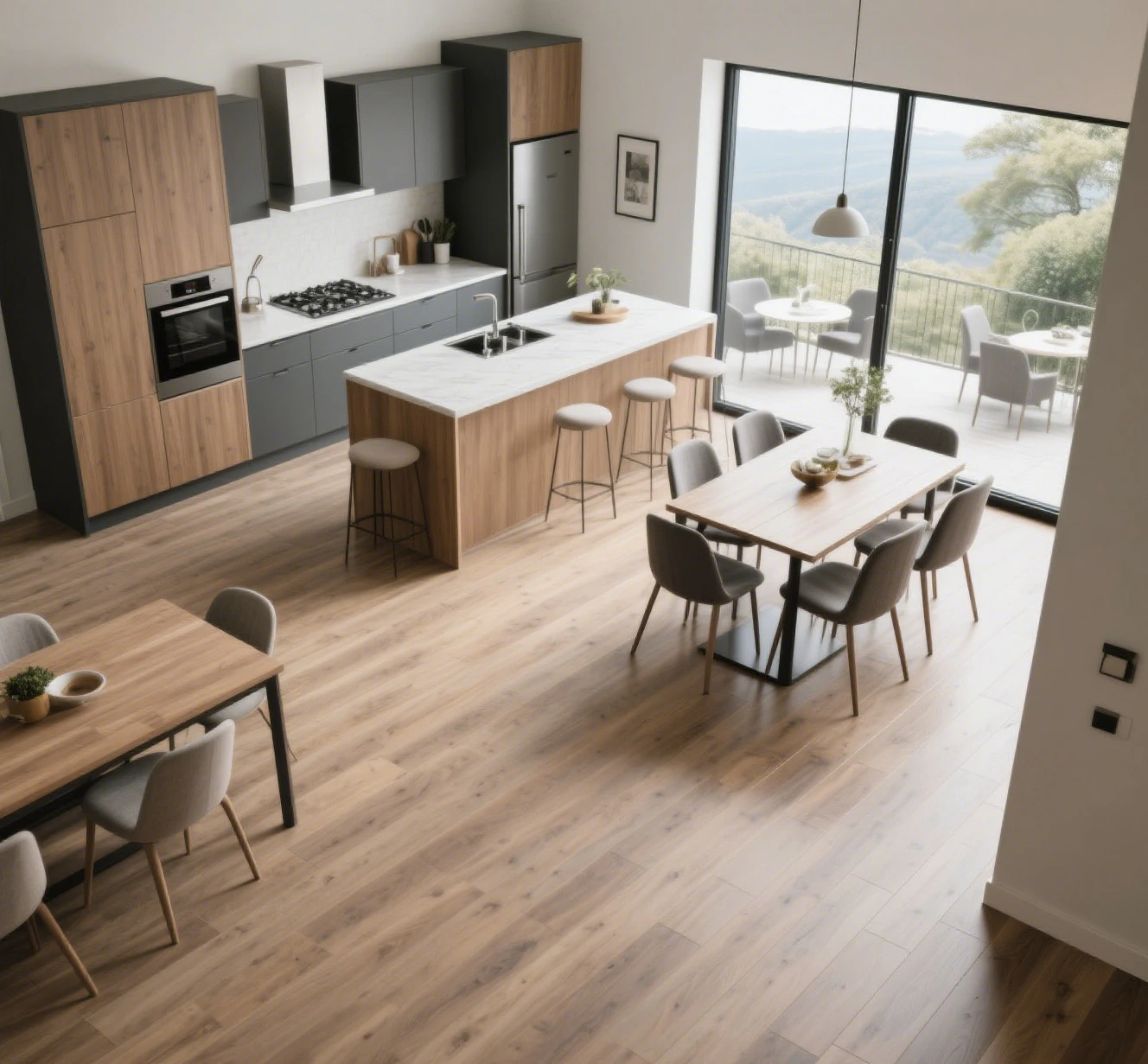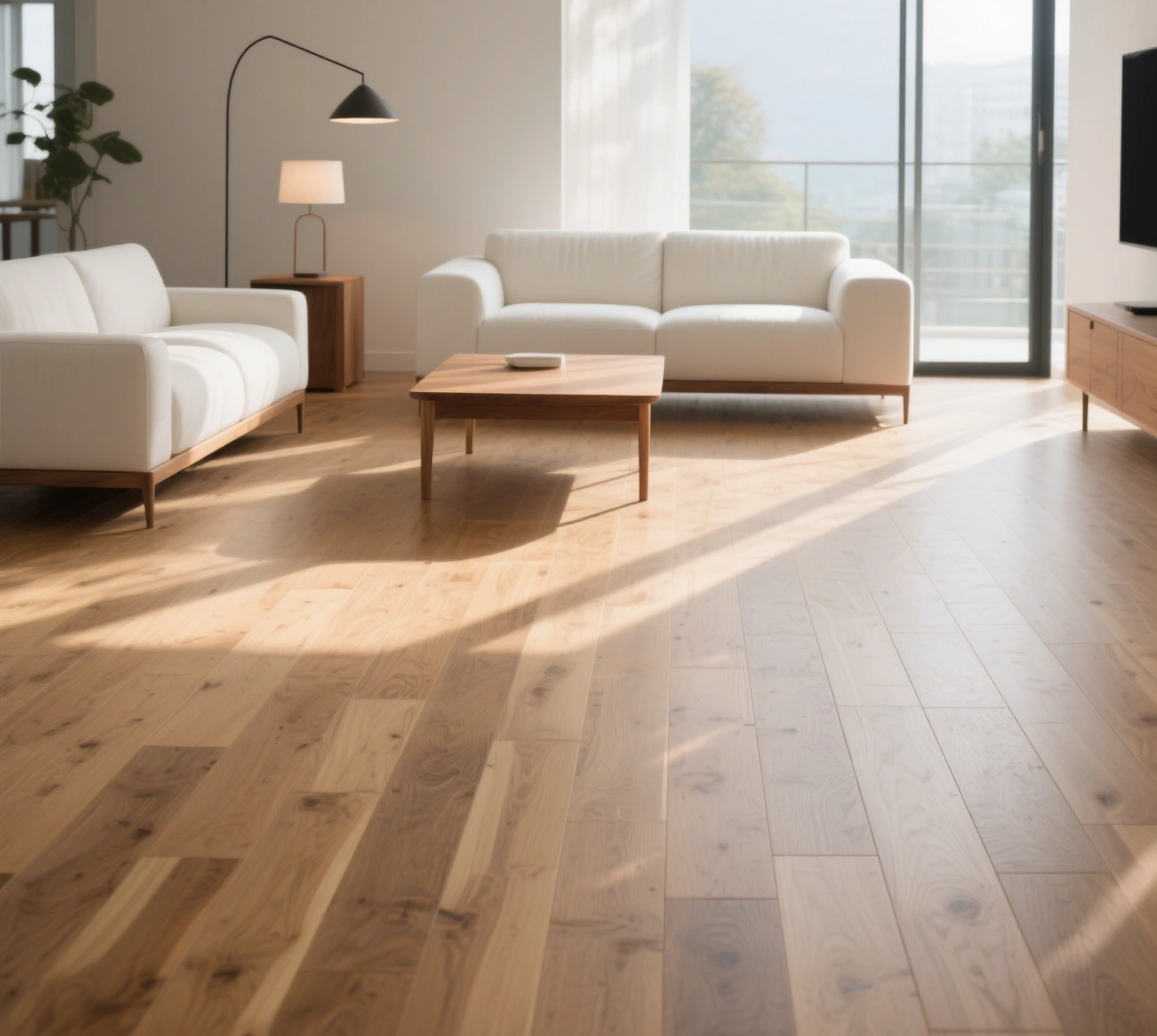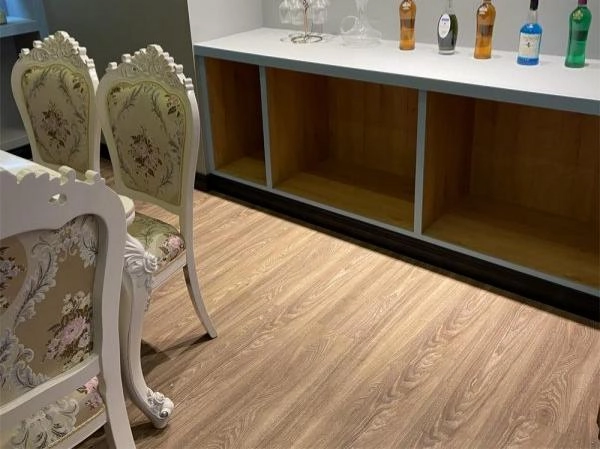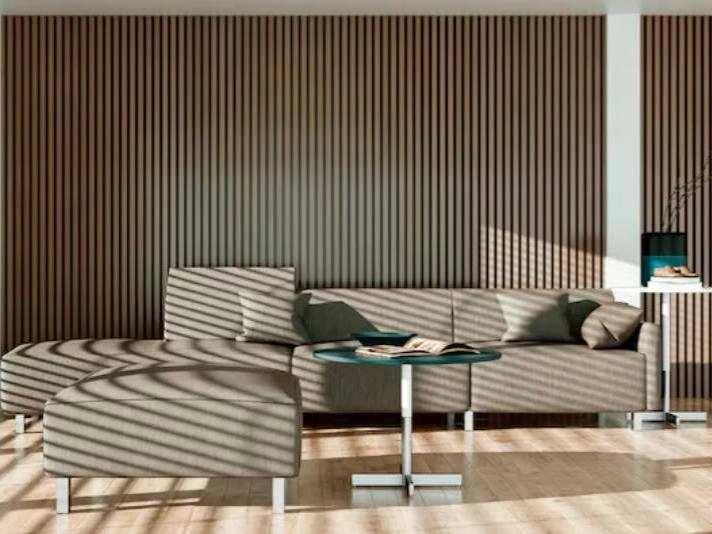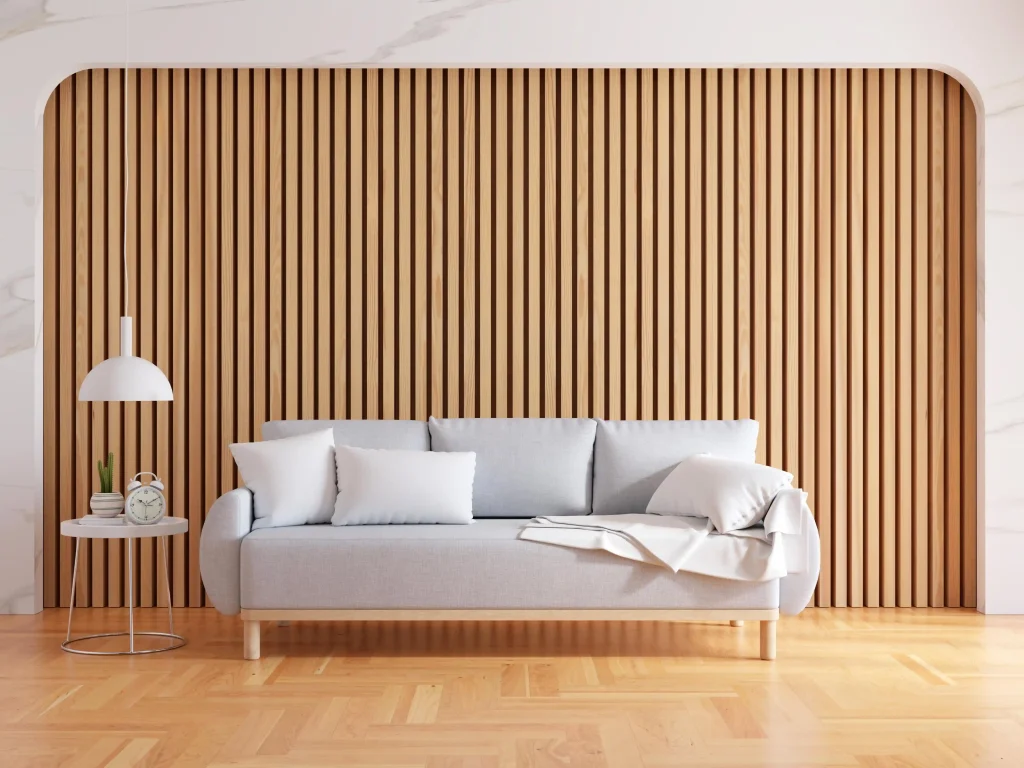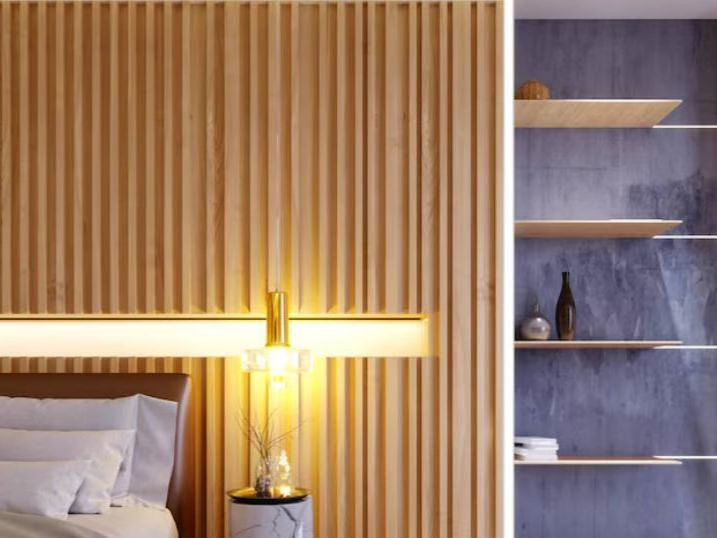WPC flooring, or Wood Plastic Composite flooring, is a top pick for homes and interior design. It’s strong, looks great, and works in many spaces. Whether you’re sprucing up your house or picking flooring for a business, understanding WPC flooring’s perks is key.
What’s WPC Flooring All About?
WPC flooring is a mix of wood powder, plant fibers like cane, light stone powder (calcium carbonate), and plastic resin. It’s boosted with extras like fire blockers, foaming agents, stabilizers, and polyethylene wax (PE wax). The result? A tough, good-looking material that feels like real wood but holds up better.
A big plus is its cushy polymer core. This core feels soft under your feet and keeps noise down while being super light. The top layer often has fancy vinyl with detailed patterns to look like hardwood or slate. So, it’s both useful and pretty.
How Do They Make It?
WPC flooring is crafted using high-heat shaping, molding, and layering. The main ingredients are wood powder (80-120 mesh), cane fibers, stone powder, and SG-8 resin. SG-8 resin flows better when forming and gets harder after shaping than SG-5 resin.
To make it strong and green, makers use calcium-zinc stabilizers instead of harmful lead ones. These keep the material stable and meet tough eco-standards. Sodium bicarbonate, a foaming agent, creates steady bubbles with low gas. This makes the flooring tougher and stops cracks from spreading.
Colorants, like yellow natural pigments, give a wood-like finish that resists weather and barely fades. Lubricants like PE wax help shape the material easily and prevent warping later.
What Makes Great WPC Flooring?
When choosing WPC flooring, some features set the best ones apart:
Waterproof and Moisture-Proof
WPC flooring tackles problems with regular wood in wet places. It won’t rot, swell, or warp when it gets wet. That makes it perfect for kitchens and bathrooms.
Toughness
Its mixed structure makes WPC flooring super sturdy. It handles daily wear like a champ. The cushy polymer core boosts strength while keeping it light.
Good Looks
WPC flooring comes in tons of styles and finishes. It looks just like real wood or stone. The top vinyl layer has deep patterns for a natural vibe.
Easy to Install
WPC flooring has a click-lock system. No need for glue or nails. This quick setup saves time and money.
Eco-Friendly
Makers use recyclable stuff like virgin PVC resin. They skip toxic stabilizers like lead. The flooring meets global green standards like ISO14001.
Fire Safety
WPC flooring has a B1 fire rating because it resists flames. If a fire starts, it stops burning on its own and doesn’t release bad gases.
Low Upkeep
Keeping WPC flooring clean is a breeze. Just sweep regularly and mop sometimes. No waxing or polishing needed, unlike hardwood.
Comfy Feel
The cushy polymer core makes walking comfy. It soaks up shocks and quiets down rooms.
Custom Looks
WPC flooring offers lots of colors, patterns, and finishes. You can pick what matches your style for homes or businesses.
Long-Lasting
Top-notch WPC flooring resists weather and aging better than most. Products with A+ grade materials often come with up to 20-year warranties.
Knowing these features and how WPC flooring is made helps you pick the right fit for your space while getting both style and function.
Why WPC Flooring Rocks for Your Space
WPC flooring has tons of benefits that make it awesome for different solutions. Its waterproof nature is a game-changer. It fixes issues with regular wood in damp areas. It’s great for kitchens, bathrooms, and basements. It won’t rot, swell, or warp from water.
It’s also super tough. The mixed structure and cushy polymer core handle daily use well. They keep it light, too. The sodium bicarbonate foaming agent adds strength and flexibility during production.
WPC flooring looks amazing. The fancy vinyl top layer has deep patterns to mimic wood or stone. With lots of styles, it fits any design taste.
Installation is a snap. The click-lock system skips glue or nails. This cuts time and costs. Plus, it’s low-maintenance. Sweep and mop now and then to keep it fresh.
It’s kind to the planet. Makers use recyclable materials like virgin PVC resin. They avoid harmful stuff like lead stabilizers. The flooring meets eco-standards like ISO14001.
WPC flooring is fire-safe with a B1 rating. In a fire, it stops burning on its own and doesn’t give off toxic fumes. This keeps homes and businesses safer.
Things to Think About When Picking WPC Flooring
When choosing WPC flooring, a few things can help you make the right call.
First, check the thickness. WPC flooring comes in 4mm to 8mm options. Thicker ones feel comfier and block noise better but might cost more.
Next, look at the wear layer. These range from 0.3mm to 0.7mm. A thicker layer means better scratch resistance and durability, great for busy spots.
Check the material quality. Top WPC flooring uses A+ grade virgin materials. These hold up against weather and aging. Pick ones with calcium-zinc stabilizers for safety and eco-friendliness.
Think about the design and finish. Choose a style that fits your decor and looks like real wood or stone.
Lastly, check installation needs. WPC flooring’s click-lock system is easy, but make sure your subfloor is flat, dry, and clean first.
Why Pick WPC Over LVP or SPC?
WPC, LVP (Luxury Vinyl Plank), and SPC (Stone Plastic Composite) each have their own strengths.
WPC flooring has a cushy polymer core. It feels soft underfoot and quiets noise well. It’s comfier than SPC or LVP for standing or walking. Its light build lets it float over most surfaces and hide small subfloor bumps.
SPC flooring is denser with a rigid stone core. It’s tougher and more stable for heavy furniture or busy areas. But it’s less comfy than WPC.
LVP has lots of design options but isn’t waterproof like WPC or SPC. That makes it less great for wet spots like bathrooms or basements.
WPC also beats SPC in noise reduction thanks to its cushy core. This makes it awesome for homes where quiet matters.
Is WPC Flooring Right for You?
Whether WPC flooring fits depends on what you need.
If you want something tough, stylish, and easy to put in and maintain, Latitude’s WPC flooring is a solid choice. Latitude’s flooring is known for top-notch quality and cool designs. It offers stylish looks for any room. Its waterproof feature makes it great for kitchens, bathrooms, basements, or spill-prone spots.
If you care about the planet but still want performance and style, Latitude’s WPC flooring uses recyclable materials. It skips harmful chemicals like formaldehyde or lead stabilizers.
Latitude’s high-quality WPC flooring comes with warranties up to 20 years. That means long-term value for your money.
While SPC is denser and more rigid, it doesn’t match the comfort of Latitude’s WPC flooring with its cushy core. LVP also lags in waterproofing compared to SPC and Latitude’s WPC.
By thinking about these points for your home or business service, you can decide if Latitude’s WPC flooring is the best way to boost both style and function.
FAQ
Q: How is WPC flooring different from regular wood flooring?
A: Unlike regular wood, WPC flooring is waterproof and resists rot, swelling, or warping in damp places. It’s also tougher, easier to maintain, and doesn’t need waxing or polishing. Plus, it has a cushy core that feels comfier underfoot and quiets noise.
Q: Is WPC flooring good for wet areas like bathrooms or kitchens?
A: Yes! WPC flooring is waterproof and moisture-proof, making it perfect for kitchens, bathrooms, or basements. It won’t get damaged by spills or humidity like traditional wood might.
Q: How easy is it to install WPC flooring?
A: Super easy! WPC flooring uses a click-lock system, so you don’t need glue or nails. This makes installation quick and saves on labor costs. Just make sure your subfloor is flat, dry, and clean first.
Q: Does WPC flooring look as good as real wood or stone?
A: It comes with a fancy vinyl top layer that has deep patterns to mimic real wood or stone. With tons of styles and colors, it looks natural and fits any decor.

